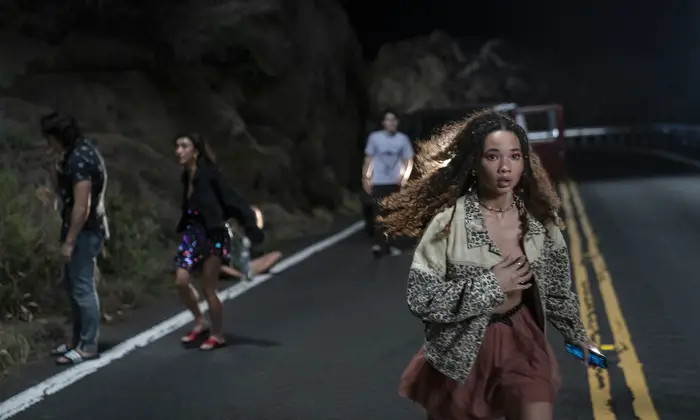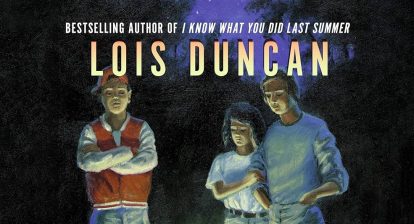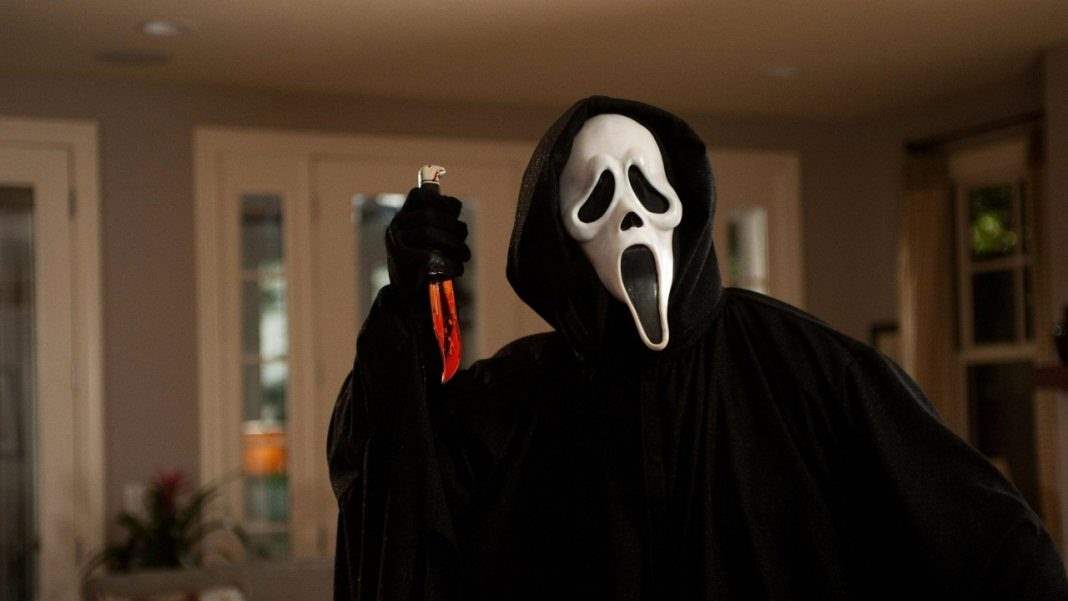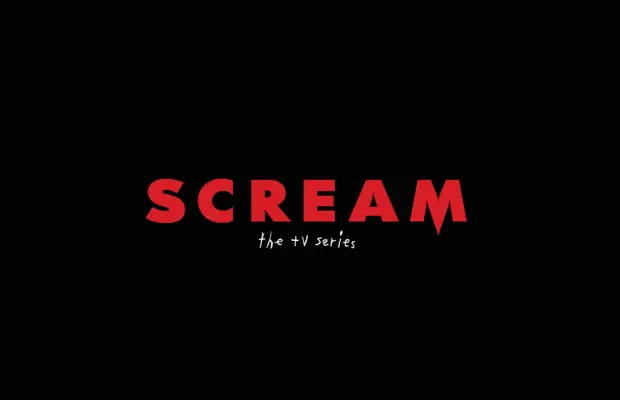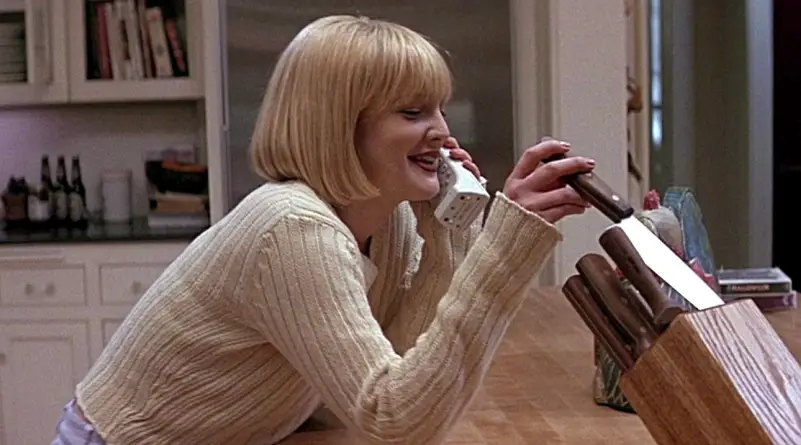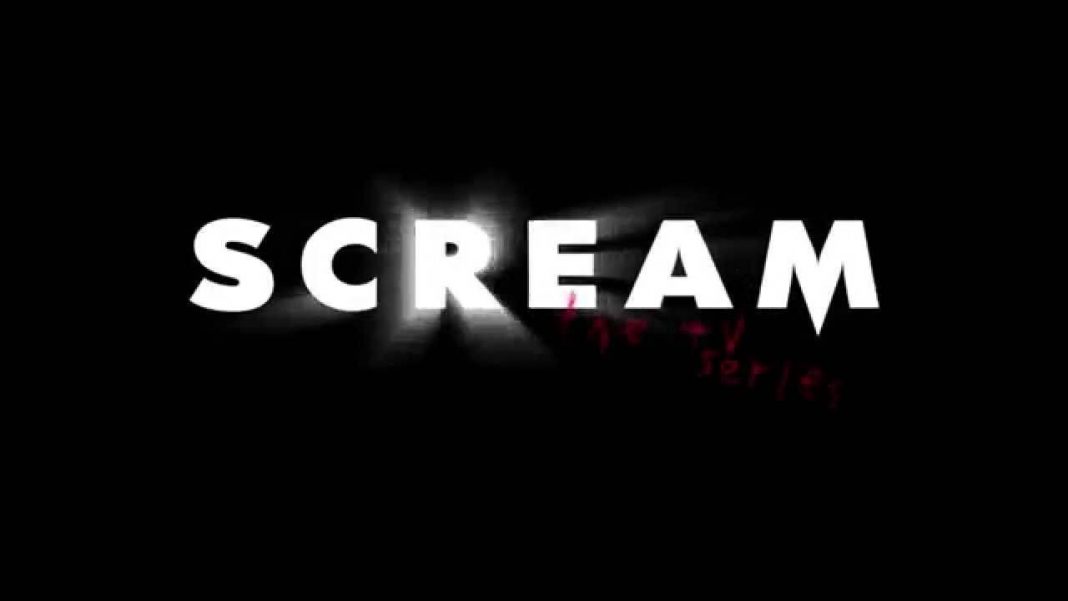The late 90s delivered slasher favorites like Scream, I Know What You Did Last Summer and Urban Legend. Almost 25 years later, these favorites are making a comeback. There are talks of an Urban Legend Screen Gems reboot, the new Scream is hitting theaters in January and an I Know What You Did Last Summer series is now on Amazon Prime. While we have to wait for two out of the three of these projects, let’s discuss I Know What You Did Last Summer. While the premise is the same as the original film, “One year after a fatal car accident occurred on their graduation night, a group of young people finds themselves bound together by the dark secret. Now, they’re being stalked by a brutal killer following their misdeeds”, there is a whole new set of creatives involved. One of those being cinematographer Anka Malatynska, who was fresh off another horror series, Hulu’s Monsterland. In the below exclusive Q & A, Malatynska talks all about her approach to the series, why she loves working with darkness and much more.
Wicked Horror: You are no stranger to the horror genre, you were also the cinematographer for Hulu’s Monsterland. What commonalities do you feel that horror projects share, cinematography wise? Certain use of shadows, angles?
Anka Malatynska: The main things that horror projects share is darkness. Scenes that are often times at night and often times that are pitch black. One of the reasons I love horror, is that I love playing with darkness. It allows cinematographers to be expressive. There is no general dark you can do, like a general day scene. I think there are horror directors who believe in watching the violence in bigger, wider shots. That is more violent than going in for cut away and close up shots. Then there is another school of horror where they want all those cut away and close up shots of the gruesome stuff. The quality that overall, 99.9% that all horror movies share is that delving into darkness. Which is such an exciting realm for cinematographers to work in.

Wicked Horror: What sort of research did you before beginning work on I Know What You Did Last Summer? Were you familiar with Lois Duncan’s book?
AM: Yes, I read the book and watched the movie. Then I watched a bunch of indie films that Craig and I collected. I found myself watching certain things and realizing what we didn’t want to do. It didn’t want to be Scream and be exactly like the original. Some of the research was seeing what has been already done and how we want to do things differently.
Wicked Horror: In a recent interview Madison Iseman, who plays the lead Lennon, said that when she started the show, she only read the first four episodes. Was that the case for you too? Was this to keep the plot as secret as possible?

AM: We kept the plot a secret from the cast for a long time. We didn’t want the cast to know who the killer was. Until we started shooting 107 or 108 did the cast know the full story, which I thought was brilliant because I think it would have affected things. And affected performances had they know the full story arch of all their characters. As soon as scripts were out, I was getting them. They were not kept from me. It took a little while before we had 107 and 108 though.
Wicked Horror: I Know What You Did Last Summer takes place in Hawaii. How did the location affect your work?
I think Hawaii is very much a character in its own right, especially in our fictional town. It was inspired by the big island. The big island is weird, there are goats everywhere and people put out salt licks for them. There are things that go on in the show that only happen in Hawaii. There is the naked nature runner’s run that the hippie community does with body paint. That takes place in one of the episodes. The culture in Hawaii, our showrunner wanted to stay away from stereotypes with surfers ect. Other than seeing a surf board in the background on Lennon’s dad’s truck, there is not really any connection to surfing or the stereotypical aspects of Hawaiian culture. I thought it was brilliant to bring the show to Hawaii instead of Big Sur. Hawaii actually really has a beautiful darkness to it, with stormy skies, blue water and rich green palm trees. It has a horror vibe. I had an opportunity to exploit both the sunny part and dark part. One of the things I look forward to is subsequent seasons, is leaning more into that Hawaiian atmospheric darkness that is intrinsic to the audience.

Wicked Horror: Was the original shot in Big Sur?
AM: I think the car crash was filmed in Big Sur, but the rest was filmed in North Carolina. Ironically, I got the job, I was working on another tv show and just so happen to be working with the original key grip of the movie. So that was fun, so I got to talk to him about it.
Wicked Horror: Denis Crossan was the cinematographer from the original film. Did he give you any advice before beginning the series?
AM: No, I didn’t get to speak to him directly. But like I said, I got to speak to the key grip about it though.

Anka Malatynska
Wicked Horror: Talk about your relationship with I Know What You Did Last Summer director, Craig William Macneill.
I think Craig is a brilliant director. He is the reason I got involved on the series. We worked on Monsterland together. I loved how methodical he was on Monsterland. On the show for himself, he ventured into new territory. His work is brilliant horror genre work and tends to be a lot more controlled, than his original ideas of how we approached the show. A lot of hand held. Giving a lot for freedom to the actors. He took it in that direction. Other directors grounded the hand held throughout the season. But in the end, that original intention is there, where we are exploring young people and their lives and that authenticity within their own messed up environment. That exists in all 8 episodes, even though Craig wasn’t there to do all 8. After Craig we had Logan Kibens, she was really committed to not reinventing the entire style of the show. She did ground things a little more. She tends to be a more limited coverage director. She wants the audience to fill things in, in their own minds. She brought a little more of her experimental, withholding information visually. Then there was Ben Semanoff, who I did not work with. In Ben’s episodes he really incorporated a lot more wide shots. The world opens up with him. Then Logan and I did the last block together. Visually the last 2 episodes are my favorite of the series.
Wicked Horror: Amazon just released a clip from the fateful scene when the teens hit something in the road. Can you talk about how you lit this night scene?
That was probably one of my biggest lighting setups ever, besides an indie film in Thailand I did years ago. It was shot in Oahu, in an iconic place in the south part of the island. People go and watch whales there and fish. It’s beautiful, but it has super jagged rocks into a very violent ocean. There are no street lights. There is natural motivation for light, other than moon. We are also on a cliffside two lane road, where one side drops off into the ocean. Being on a two-lane road with nowhere to put the company was very difficult. To light that ocean, I think we were working 5 nine k’s, 4 18 k’s, all spread out over a three mile stretch of road. Overhead I was using a moon box, which I talked about earlier. A moon box is a big source of light in the air, that goes on a condor lift 60 feet into the air, it mimics the idea of moonlight. That moonbox creates a soft light and then makes it a lot easier, so that the actors can move more freely. One of the actors had deep set eyes, so I adapted that moonbox, so that it would be softer than I would normally use. So that was the approach. It’s dark and it’s moonlight, but we have to still see something. It still needs to look sexy in some sort of visual way.

Wicked Horror: Were there any behind the scenes obstacles with this shoot that caused you to alter what you had planned?
AM: In Hawaii it rains all the time and then you just keep shooting until you see the rain in the shot. Shooting a series like that, that happens. Weather wise that was our biggest re director. It flooded too. We had one location that rained constantly. Even if it was sunny everywhere else, it always rains there. There were some approaches I had to do differently, from a technical standpoint. This is deep grip and electrical equipment, but the kinds of lifts we used for the moon boxes. These mimic moonlighting. The equipment that I used to carry fly swatters, had to be bit different because it gets so windy in Hawaii, all of the diffusion around the moon box had to be hard diffusion. It would be out of hard material as opposed to rags. So there was a very different approach to the lighting equipment. For the reasons of wind and rain. We were never shut down for these reasons, we just worked through things. Everyone thinks that shooting in Hawaii is going to be so wonderful, and it is, but you are hiking up a cliffside, you are on a mountain, in a jungle. It is definitely not a studio shoot in LA.
